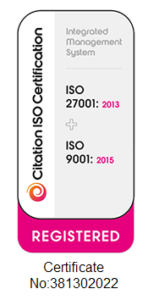Dotting the “I’s” and Crossing the “T’s” in Virtual Meeting Scoping
“Let our advance worrying become advance thinking and planning.” — Winston Churchill
Scoping projects and developing specifications in the virtual world is vastly different from physical meetings.
While it’s easy to visualise how you want a physical stage to be set up, when businesses ask for a virtual meeting, there are myriad questions that need to be asked: What does virtual look like to you? What look and feel are you expecting? Do you want virtual backdrops, subtitles? The past year has taught us that there are so many permutations to think about when explaining the scope of virtual that you really need a checklist.
We have learned the importance of getting a clear understanding of expectations and variables in early discussions and asking detailed questions. A client might ask us to support a 90-minute webinar, which in principle seems straightforward but can throw up many problems if not properly planned. We need to know what kind of slide deck the client wants, whether those slides will be branded, do they need editing and if so, how much. Will the whole session be pre-recorded, or will some parts be live? Should the audience be able to join the discussion or be kept separate from the faculty? And if the latter, how do you plan to handle Q&A?
Knowing the client’s expectation drives the discussion about what our role is in delivering the meeting, how much time is involved and, ultimately, pricing.
A lot of our clients are not technically minded; they just know that they want to put on a virtual event or develop a virtual learning management system. It’s the complexity around each element of these events that determines what the journey will look like. Without that checklist of questions, the actual scope of the project is only known once you are well into the process.
Early on in the move to virtual meetings, we were working with a client on a continued medical education (CME) accreditation event. We asked at the start who would be handling the CME and were told this would be managed in-house. We were, therefore, working on the basis that there would be minimal input from us on CME management.
Further into the project we found out that while the client was managing CME, there was more than one accreditation body involved, so different CME providers needed to be attributed to different types of delegates joining the event. During scoping, no one had mentioned they would need a certain amount of data from us and that the data would need to be tagged. At the point of registration, we had no idea that different delegates needed to be tagged and filtered according to the relevant CME. That tagging then had to be handled manually in retrospect for 1,500 delegates.
Now we know to ask detailed questions such as: What is the requirement for CME? Are there different CME accrediting bodies involved? Is there a need to track certification? Who is applying for the CME accreditation? Who is managing the process? This allows us to know the time involved and what processes need to be managed upfront to ensure the right information is captured from the outset.
Another common issue we come across is how speaker presentations will be handled.
For example, a virtual event might involve 30 speakers over two days. During discussions we are told that 70 percent of the speakers will pre-record their presentations and that we will handle the other 30 percent. But often when the client sees the pre-recorded presentations, they realise the recordings aren’t good enough. The backdrops may be inappropriate, the recording poor quality, the presentation too long.
The result is that we suddenly face a huge variance in scope. We have learned that the flexibility that is possible in the physical space – adjusting for some presentations going over by cutting back elsewhere or allowing the programme to run longer – is not feasible in the virtual space. So, while what we do in terms of engagement is much the same as in physical meetings, the project management logistics have become much more production heavy with huge variance in scope between what is initially proposed and the actual outcome.
To prevent this from becoming a long-term problem, we’ve been developing a more detailed pricing model that has many more of these variants built into it. We are using visual presentations to explain these different elements to clients, showing them examples of what a sophisticated presentation looks like versus a simple Zoom call with a professional background. We show them examples of what their slides will look like based on different scenarios and we provide clear pricing, with options for taking out aspects or adding in elements depending on budget.
With the experience of all these variants, thanks to handling hundreds of virtual meetings, we know how to scope better based on the client’s full expectations – all by us asking better, more detailed questions from the outset and setting up our processes to be more efficient.
Caroline MacKenzie is the operations director at Open Audience, which specialises in making life sciences meetings more engaging with more positive, successful outcomes. The Open Audience team helps to strategise and prepare pre- and post-meeting as well as providing real-time support and guidance during the meeting. Open Audience also offers customisable, multi-lingual engagement platforms that include interactive polling, surveys, and ideas exchange.
Know someone who would find this interesting? Share this article with them!

